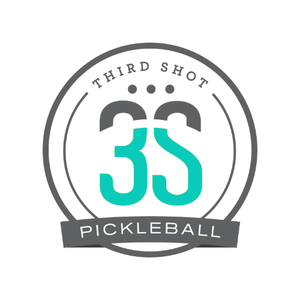Pickleball is considered an 'open-skilled' sport because it requires wide-ranging and varied skills and the circumstances are always changing. The height, speed, spin, distance and direction a ball is hit is never quite the same as the ones before it. The fact that players are standing at (or moving through) different places on the court, that wind or sun conditions change throughout a game, means that pickleball is an activity full of variability and change.
That said, as someone who works with a lot of pickleball players, I can say that for all the variability in the sport, there are quite a few mistakes and habits that are common to intermediate players. Here are a few of them...
Coming to the Net Casually. Hitting a return of serve and coming to the net is a useful tactic because it can pressure your opponents. By reducing the distance between you and them, you give them less time to react when you play your volley. Additionally, you are more likely to get a nice high ball when you are at the net, a ball that you can hit downward and with speed, again limiting the time they have to set up.
Many intermediate players return serve and move towards the net but don't actually get there by the time their opponents strike the ball. They are on their way to the non-volley zone but fail to reach it in time. While this isn't the end of the world, being several feet back of the line is problematic for two reasons: 1) you aren't as close to your opponents as you could be. That means when you hit, the ball has farther to travel and they will have more time to react; 2) by being back from the NVZ you make it less likely you'll get a high ball, and more likely it will be low. This makes you more susceptible to receiving one of those annoying balls at your feet.
Returning Serve to the Middle of the Court. I know. You've probably been told a million times that the centre of the court is exactly where you should be hitting your return. "Down the middle solves the riddle", right? While it does give you a significant margin for error and could cause confusion, I question whether you, as an intermediate player, really need a 20ft wide target. And even if you do manage to confuse your opponents, there is a good chance that if they do get fooled with a middle ball that they'll have a conversation about what to do next time you hit there. And I'm not sure that these two (marginal) benefits are worth the significant downside.
When you hit to the centre of the court you allow either player to hit the ball -- you give your opponents the choice of who plays that third shot. And who do you think will take it? The better player, of course! A better strategy is to aim the ball to the person you want to hit it. Whether it is a weaker player or one who has struggle recently, by aiming the ball away from the middle of the court, you take more control of the point.
Hitting Hard at the Baseline Player. Perhaps you've been told "if you've got 'em back, keep 'em back" but is that always great advice? No. It is not. If you have a ball you're looking to hit hard (typically a ball above net height), then hitting to the person farthest away is a mistake. The farther away they are, the more time they will have to react to your shot. If you're looking to hit hard, the person closest to you should generally be your target since they will have less time than their farther away teammate.
Believing a Drop is the "Right" Third Shot. The third shot is a critical moment in a pickleball point. But we should remember that there are three possible options when you hit a third: a drop, a drive, a lob. There is no rule that you must play a soft, low ball into the kitchen (a drop). If you are playing against people who move poorly, a lob can be very effective. A fast, low shot (a drive) can be an excellent choice against people you think you can overpower or who have weak volleys. Drops are incredibly risky -- a little to short/low and the ball is in the net. A little to high or far and they have an easy put away-- so I recommend using drops only if the other two (easier to execute) options don't work against your opponents.
Not Playing a Dink In Response to a Low Ball. Many intermediate players try to win the point each time they hit the ball. This is a mistake. If your opponents hit a low, soft shot that is forcing you to hit upward, your best bet is a dink. An upward hit requires that you hit slowly if you want to keep the ball in play, right? If you hit anything but a soft, slow ball, you are likely giving the other team a ball above net height. They like those! So, if someone gives you a low ball, stay patient and play a soft, slow dink in response.
Mark Renneson is the Founder of Third Shot Sports and its Head Coach. He can be reached by email at mark@thirdshotsports.com
